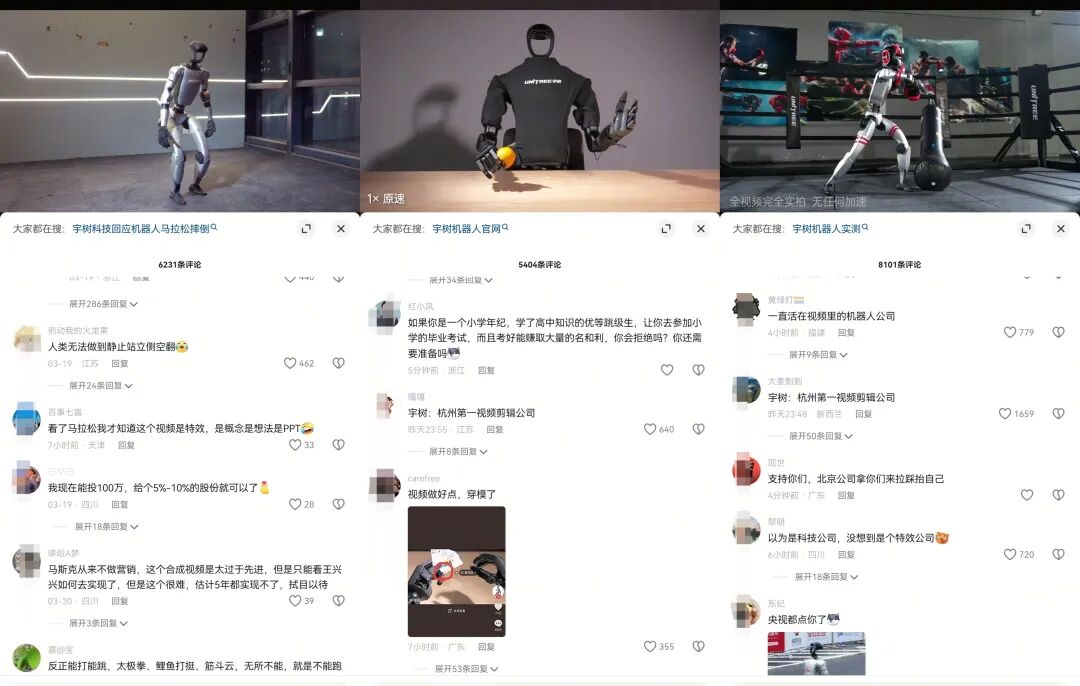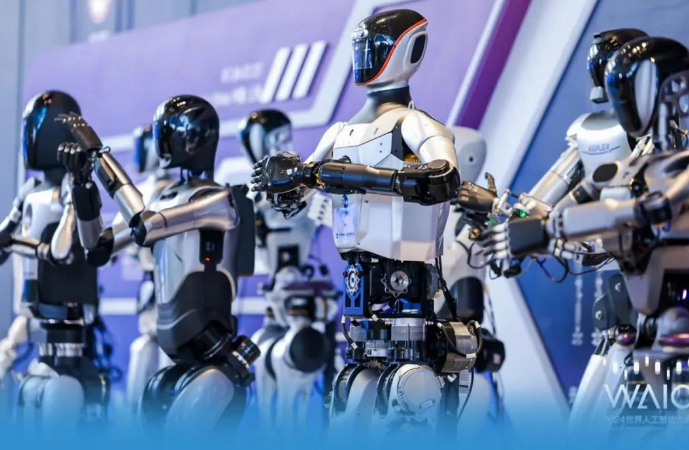Comments on Yushu Technology’s Douyin account have raised doubts, primarily due to the poor performance of its G1 robot in the humanoid robot half marathon in Beijing Yizhuang.
In the 2025 Beijing Yizhuang humanoid robot half marathon, Yushu Technology’s G1 robot performed poorly, falling multiple times and even requiring human assistance to continue the race. This performance starkly contrasted with the high expectations set by promotional videos shared by netizens.
Netizens believe that the presence of Yushu’s robot at the half marathon represents the level of Yushu Technology. This is incorrect; if Yushu Technology were to participate, they would design a robot specifically for the competition, programming it and collaborating with a top-tier engineering team.
The teams participating in this event are customers who purchased Yushu robots, competing with the 100,000 yuan Yushu robots. If it were Yushu itself, they might use research-grade robots costing millions, with the best quality and performance, to compete.

Results of the First National Robot Half Marathon
The first national robot half marathon took place on April 19, 2025, in Beijing Yizhuang, attracting 20 robot teams from Beijing, Shanghai, Guangdong, and other regions. The course was 21.0975 kilometers long, using a “human-robot co-running” model, with human participants and robots in different competition zones. Here are the key information and results of the event:
1. Highlights of the Competition1. Course Design The course included flat ground, slopes (maximum slope of 9°), and multiple turns, with a 1.5-kilometer straight section before the finish line to test sprinting ability, passing through iconic locations such as Nanhai Park and Paulownia Avenue, featuring a complex environment rich in cultural landscapes.2. Participating Robots Robots must be bipedal humanoids, with wheeled structures prohibited, heights ranging from 75 cm to 1.8 m, and weights from 10 kg to 55 kg, with some equipped with battery-swapping and wear-resistant designs. For example: – Tiangong Ultra (Beijing Humanoid Robot Innovation Center): Height 1.8 m, weight 55 kg, pace 7-8 km/h, equipped with the intelligent platform “Wisdom Opens the World.” – Little Rascal N2 (Songyan Power): Height 120 cm, theoretical maximum pace of 3.5 m/s. – Yushu G1 (third-party participant): Did not place in the top three due to stability issues.3. Rules and Challenges Battery swaps (no penalty) or relay robot changes (penalty) are allowed during the competition, but must be approved by the judges. Robots must autonomously handle complex road conditions, such as balance, heat dissipation, and joint wear. 2. Competition Results1. Champion: Tiangong Ultra (Beijing Humanoid Robot Innovation Center, UBTECH Robotics) – Time: 2 hours 40 minutes 42 seconds, maintaining a steady pace of 7-8 km/h, with a maximum speed of 12 km/h. – Advantages: High-power joint design, lightweight and heat dissipation technology optimization, intelligent path adjustment capability.2. Second and Third Place: – Second Place: Little Rascal N2 (Songyan Power), total time 3 hours 37 minutes 50 seconds (1 robot change). – Third Place: Voyager II (Songyan Power), total time 4 hours 25 minutes 56 seconds (2 robot changes).3. Other Awards: – Best Endurance Award: Tiangong Team (completed the race without changing robots). – Best Morphological Innovation Award: Voyager II Team, Intercity Technology Team, etc. 3. Significance of This Competition Tiangong Ultra solved issues of joint heating and balance during long-distance running through structural optimization and heat dissipation technology. The event validated the comprehensive capabilities of robots in environmental perception, motion control, and energy management technologies, promoting industry iteration.
“The performance of Yushu’s robot in the half marathon has sparked controversy, exposing the significant gap between mass-produced and laboratory products, reflecting the current state of the industry. This event serves as a mirror to the technical shortcomings and also highlights China’s breakthroughs in humanoid robot speed algorithms, providing a crucial opportunity for collaborative innovation in the industry chain.”
Related listed companies with outstanding performance may experience short-term positive stimuli!
By the way, the recent doubts about Yushu Technology raise the question: Is there too much hype around humanoid robots?

In February 2025, humanoid robot concept stocks surged with a trading volume of 58 billion yuan in a single day due to technological breakthroughs (such as BeamDojo’s dynamic emotional modeling technology), with many supply chain companies’ stock prices hitting the ceiling. However, just two months later, the industry faced reports of wage arrears, with some companies experiencing cash flow breaks, raising market concerns about overvaluation.
Goldman Sachs’ predicted market size of $30 billion by 2025 has been questioned as “overly optimistic,” with the actual commercialization process still limited by technological maturity and user acceptance.
In the first quarter of 2025, humanoid robot companies completed intensive financing of over 100 million yuan, but during the same period, institutions like Jinsha River Venture Capital withdrew from related projects in bulk, and Zhu Xiaohu publicly warned of “irrational exuberance” in the industry.
“Who would spend over 100,000 yuan to buy a robot to do these tasks?”” Earlier, Zhu Xiaohu, managing partner of Jinsha River Venture Capital, publicly stated that the firm is withdrawing from the humanoid robot sector in bulk.
What are everyone’s thoughts on this?